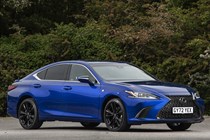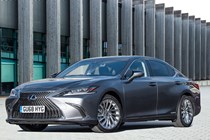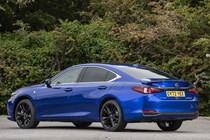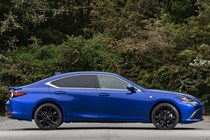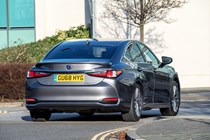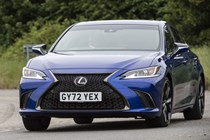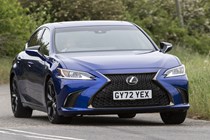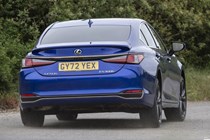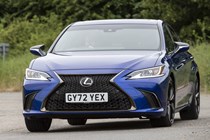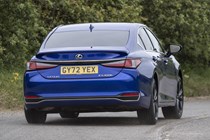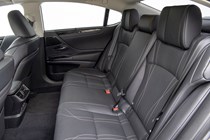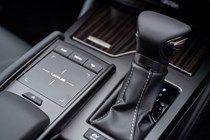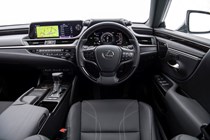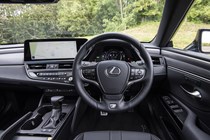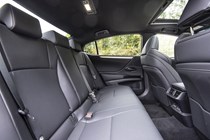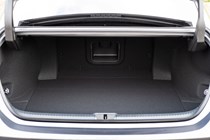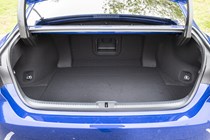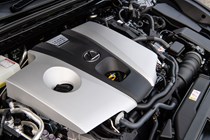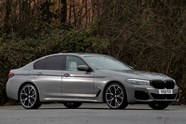
Lexus ES review

At a glance
| Price new | £43,945 - £57,245 |
|---|---|
| Used prices | £15,015 - £41,923 |
| Road tax cost | £195 - £620 |
| Insurance group | 31 - 39 |
Get an insurance quote with

|
|
| Fuel economy | 48.7 - 54.3 mpg |
| Range | 638 - 671 miles |
| Miles per pound | 7.1 - 8.0 |
| Number of doors | 4 |
| View full specs for a specific version | |
Available fuel types
Hybrid
Pros & cons
- Smooth, efficient hybrid engine
- High build quality
- Great refinement
- No estate option
- Lacks dynamic excitement
- Rivals offer more choice
Lexus ES Saloon rivals
Overview
Lexus has long been happy to offer a range of slightly left-field alternatives, and with the Lexus ES it’s going after the premium saloon car segment – an area of the market usually dominated by Germans.
The ES is a hybrid-only saloon car that builds upon the niche carved by the old GS, aiming to offer relaxing, efficient motoring and a similarly relaxed and efficient ownership experience. Economy and dependability are the order of the day here, courtesy of the brand’s 2.5-litre hybrid engine and 10-year warranty.
Rivals are numerous, varied, and talented. The driver’s choice in the segment remains the brilliant BMW 5 Series. The Mercedes E-Class offers a pair of plug-in hybrids as well as a tech-fest interior. Meanwhile, the Jaguar XF sits below, offering quietly excellent value and a great driving experience. The ES is only available as a saloon, too, while all of these rivals offer estate options for those who need more space.
The ES retains Lexus’ typically busy styling, but it’s one of the more cohesive designs to come out of the Japanese brand in a while. It looks long, low and purposeful, while the interior received an update in 2022 to make the infotainment much easier to use. The resulting cabin is beautifully crafted and very comfortable.
There are four flavours of ES currently on sale. The range starts with Premium Edition, which comes generously equipped with LED headlights, electrically adjustable seats, climate control, and the Lexus Safety System+ which brings autonomous emergency braking, adaptive cruise control and lane-keeping aids.
You can then go one of two directions – posh, with the Premium Pack, or sporty, with the F Sport trim. Both bring extra equipment, but the Premium Pack is more geared towards high-tech with additional safety kit, leather upholstery, matrix LED headlights and ventilated front seats while the F-Sport adds sports seats, black alloy wheels, and adaptive suspension with configurable driving modes.
The top-of-the-range Takumi brings even more safety kit with a 360-degree camera and blind-spot sensors, plus glitzy chrome trim and wood on the interior. Regardless of trim, pricing tends to undercut its German rivals, by quite a significant amount at the entry level.
Keep reading our Lexus ES review to find out what we make of its interior, practicality, driving dynamics and running costs.


